
All photos courtesy of the Illinois Department of Natural Resources.



All photos courtesy of the Illinois Department of Natural Resources.
The year 2025 marks the centennial anniversary of the Illinois Department of Natural Resources (IDNR), formerly known as the Department of Conservation. For a full century, the department has served as a steward of Illinois’ natural heritage—protecting wildlife, restoring habitats, and ensuring that future generations can enjoy the state’s diverse natural resources. Among its many achievements, one story stands out as both remarkable and enduring: the recovery of the white-tailed deer.
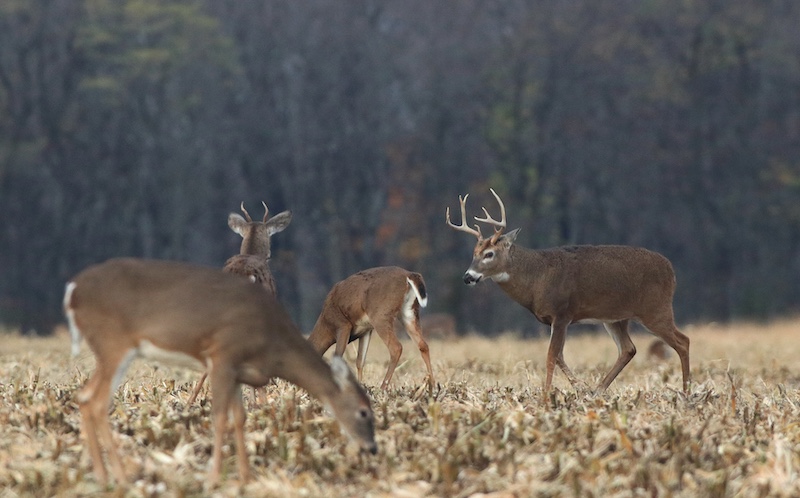
At the turn of the 20th century, the outlook for white-tailed deer in Illinois was bleak. During the late 1800s, Illinois’ prairies and forests were rapidly converted to farmland, and much of the remaining woodland was logged for timber. Without regulated hunting seasons or bag limits, market hunters supplied venison and hides to urban centers in mass quantities. As a result, populations had plummeted and white-tailed deer were nearly extirpated.
In 1901, in an effort to stem further decline, the state enacted a “temporary” moratorium on deer hunting, initially intended to last five years. That moratorium would ultimately remain in place for 56 years, as deer numbers continued to dwindle despite early conservation measures.
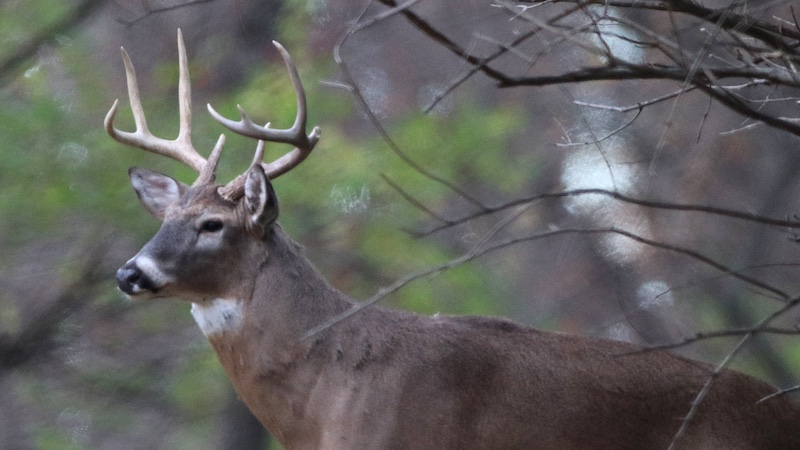
The first steps toward organized wildlife management began in 1903, when Illinois required both resident and nonresident hunting licenses for the first time. Although the Department of Conservation had not yet been formally established, these early regulations reflected a growing awareness among scientists and policymakers that wildlife populations could not sustain unchecked harvest. The Department of Conservation was established in 1925 to unify scattered natural resource efforts under one agency. Its early mission included restoring game species, protecting waterways and preserving natural areas — goals that remain central to the modern IDNR a century later. The Department of Conservation sought to create a framework for coordinated habitat protection and species recovery efforts across the state.
By the late 1920s, the department began investing directly in land acquisition for conservation purposes. Using funds from its operating budget, Illinois purchased public lands to serve as wildlife refuges—beginning with Horseshoe Lake State Fish and Wildlife Area (SFWA) Refuge in Alexander County in 1927. Shortly thereafter, reintroduction programs took shape.
Early translocation efforts were modest by today’s standards. Deer were captured from neighboring states, often using rudimentary trapping methods, or acquired from local game farms and transported by rail or truck to release sites across Illinois. Survival rates varied, but each successful introduction laid the groundwork for the population’s gradual recovery.
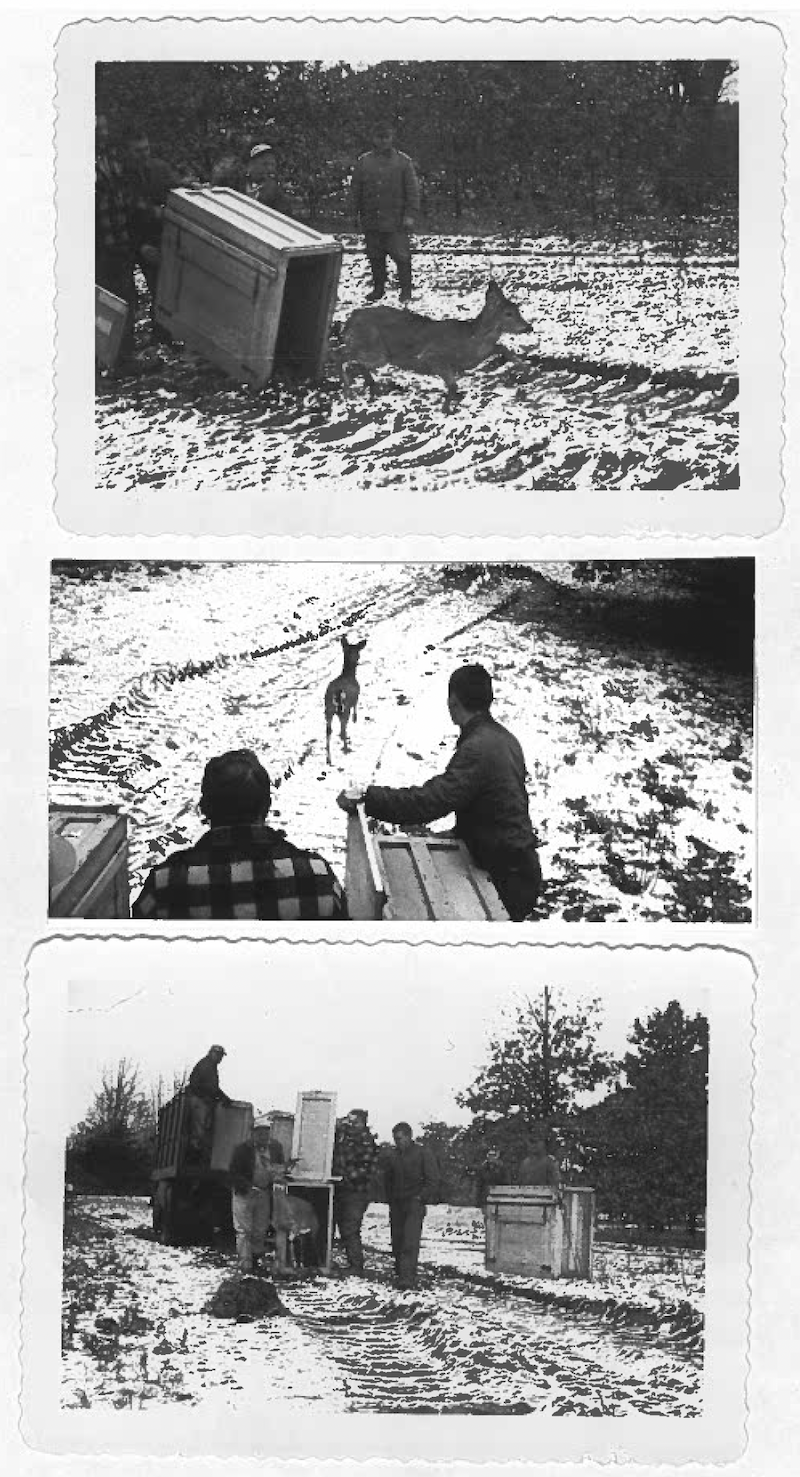
The first documented relocation of deer into Illinois occurred in 1933 at Horseshoe Lake SFWA Refuge, where one buck and three does were released. Additional reintroductions followed in the Shawnee National Forest (1935), Union County (1936) and Carroll County (1937), with the goal of reestablishing sustainable populations across multiple regions.
A major turning point came in 1937 with the passage of the Pittman–Robertson Federal Aid in Wildlife Restoration Act. This landmark legislation directed excise tax revenues from the sale of firearms and ammunition toward wildlife conservation programs. Since its passage, the Pittman–Robertson Act has provided more than $1 billion in federal funding for Illinois conservation programs. The funding provided Illinois with essential resources to expand public land acquisition, strengthen habitat management, and support the reintroduction of game species such as the white-tailed deer. For more on Pittman–Robertson funding, see our May 2025 feature.
Despite these initiatives, recovery was slow. A 1940 statewide census estimated the Illinois white-tailed deer population at roughly 500 animals. Steady effort and persistence began to pay off over the following decades. By 1968, surveys estimated approximately 25,000 deer statewide—a fiftyfold increase in less than 30 years. Continued habitat protection and regulated harvest contributed to further population growth: by 1991, the population had surpassed 100,000. Today, deer are so abundant in Illinois that management, rather than recovery, is the focus.
Through the work of current-day IDNR biologists and conservation specialists, deer populations are carefully managed to balance ecological health, agricultural interests and recreational opportunities. Programs addressing chronic wasting disease (CWD), vehicle collisions and habitat quality ensure that Illinois’ deer population remains both sustainable and healthy for the future.

When viewed across a century, the contrast is striking. In 1957, following the repeal of the hunting moratorium, the Illinois General Assembly reinstated regulated deer hunting for the first time since 1900 and permits were sold for $5 each. That inaugural season saw approximately 2,600 archery and 1,700 firearm permits issued statewide, resulting in a total harvest of just 1,900 deer.
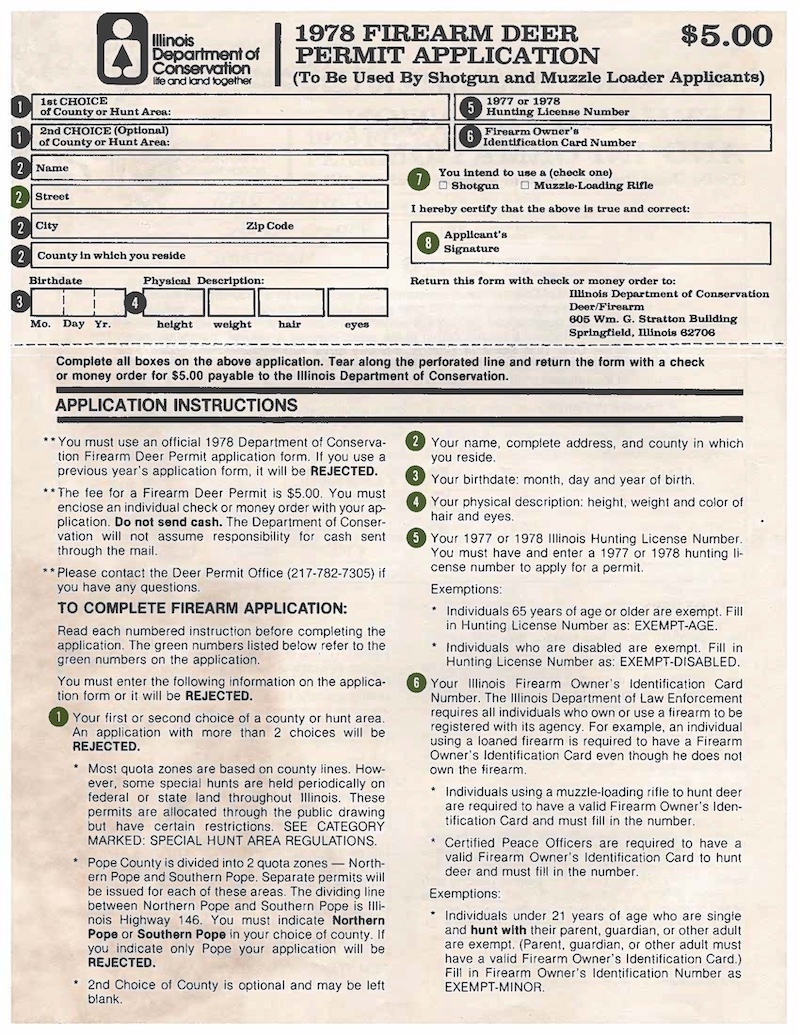
In comparison, modern hunting participation has expanded exponentially. In 2024, more than 200,000 archery permits and 250,000 firearm permits were issued, along with additional permits for muzzleloader, youth and late-winter seasons, equating to the sale of 507,709 permits for the year. The total harvest in 2024—171,322 deer—represented nearly ninety times the number taken in 1957.
Today, it may seem unimaginable that Illinois ever faced a time when deer were scarce. When the first legal deer season opened in 1957, newspapers reported hunters traveling hundreds of miles for the chance to see a deer — a sight many Illinoisans had never experienced in their lifetimes. Now, many Illinoisans can’t make the commute to or from work without seeing at least one deer.
Yet the species’ history reminds us of the fragility of wildlife populations and the importance of sustained conservation. The recovery of the white-tailed deer stands as one of the most notable successes in the 100-year history of IDNR. Through the dedication of countless biologists, conservation police officers, land managers and volunteers, Illinois transformed a near-extinction scenario into a thriving and carefully managed resource.
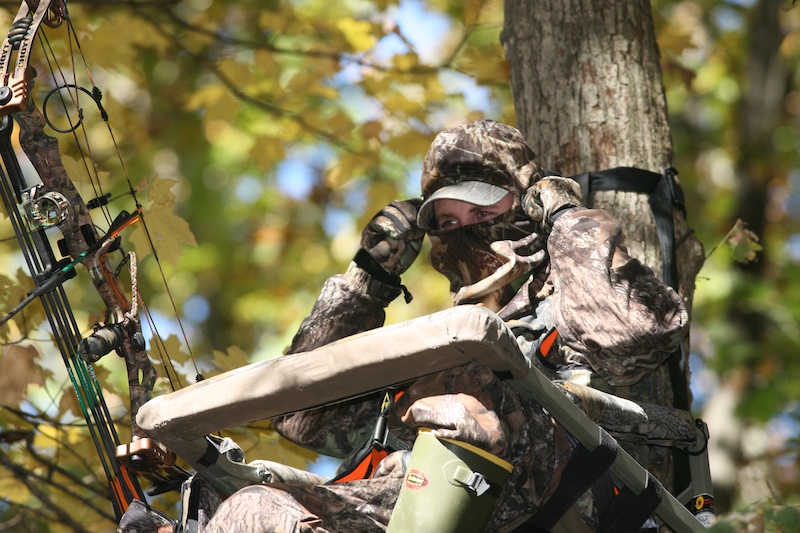
As the department celebrates its centennial year, the resurgence of the white-tailed deer serves as a testament to a century of science-based management, public support and enduring commitment to natural resource stewardship. From scarcity to abundance, the deer’s return symbolizes both the challenges and triumphs that define Illinois’ conservation legacy.
Kaleigh Gabriel is a Wildlife Outreach Specialist with Lewis and Clark Community College, working out of the Illinois Department of Natural Resources building to assist the Division of Wildlife Resources. Growing up just between Sangamon and Christian counties, she spent a lot of her time hunting and fishing in Illinois. She received her bachelor’s degree in writing/journalism from Manchester University, Indiana.
Submit a question for the author